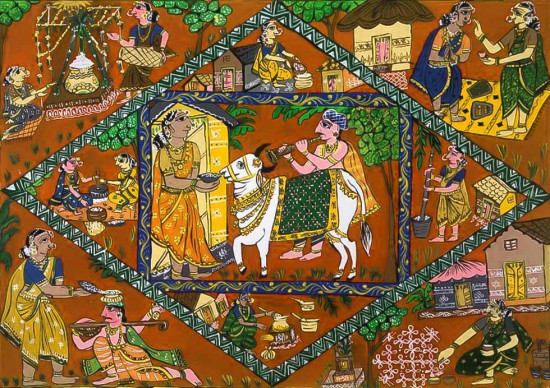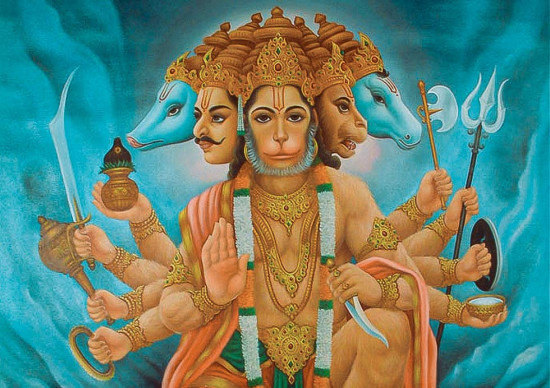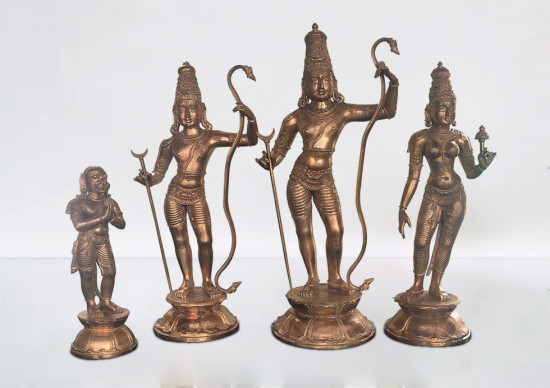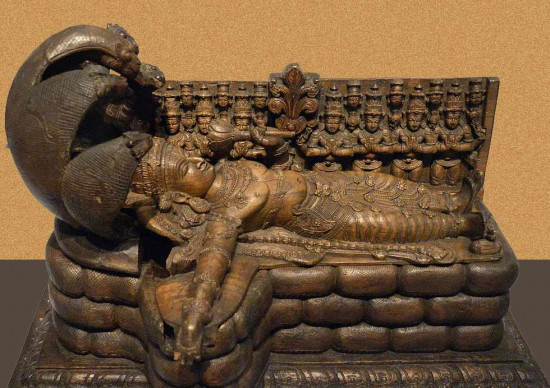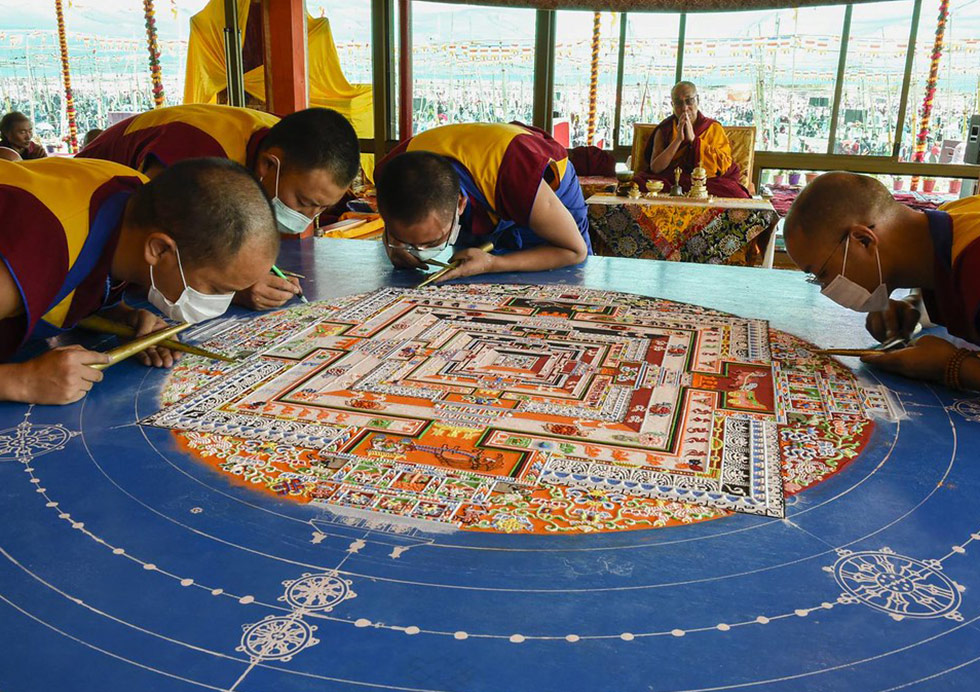
Kalachakra Mandala
Kalachakra Mandala
Tibetan Buddhist Thangka art is a significant part of Indian culture. One of the most amazing Thangka paintings of all time is the Buddhist Kalachakra Mandala Painting, which is admired for the symbolic elements that make up its design. And the way it visually conveys key teachings of traditional Tibetan Buddhism.
The residence of a deity or god is represented in a mandala. This representation depends upon how it would appear to humans because it is said that a deity’s abode depends on the mind of the person viewing it.
The mandala can be entered into and used as a tool for enlightenment with the help of proper practice and initiation from a lineage holder. The deity Kalachakra is a
Buddhist deity, and the Kalachakra mandala is a two-dimensional representation of a real pyramid-shaped building.
The residence of a deity or god is represented in a mandala. This representation depends upon how it would appear to humans because it is said that a deity’s abode depends on the mind of the person viewing it.
The mandala can be entered into and used as a tool for enlightenment with the help of proper practice and initiation from a lineage holder. The deity Kalachakra is a
Buddhist deity, and the Kalachakra mandala is a two-dimensional representation of a real pyramid-shaped building.
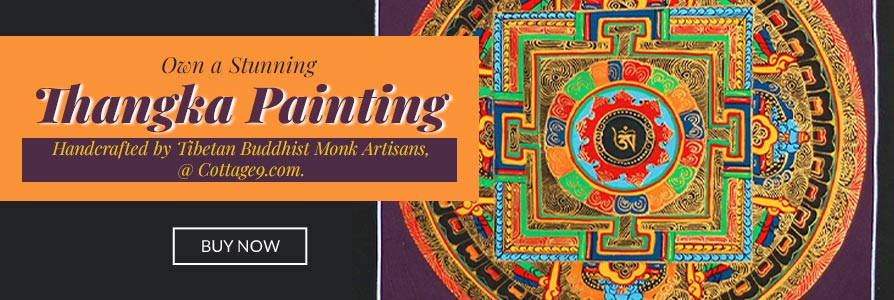
Each component of the mandala symbolizes a component of the enlightened mind as well as a component of the dwelling’s physical attributes. The attributes of a Buddha’s bodily activities are represented by the first level and outermost square of these mandalas.
The floor above the second floor depicts his thoughts, the floor below his speech, and the final floor-represented by the tiniest inside the square-represents fully enlightened intelligence. There are many Buddhist Mandala Thangka paintings available and are showing all these elements.
The floor above the second floor depicts his thoughts, the floor below his speech, and the final floor-represented by the tiniest inside the square-represents fully enlightened intelligence. There are many Buddhist Mandala Thangka paintings available and are showing all these elements.
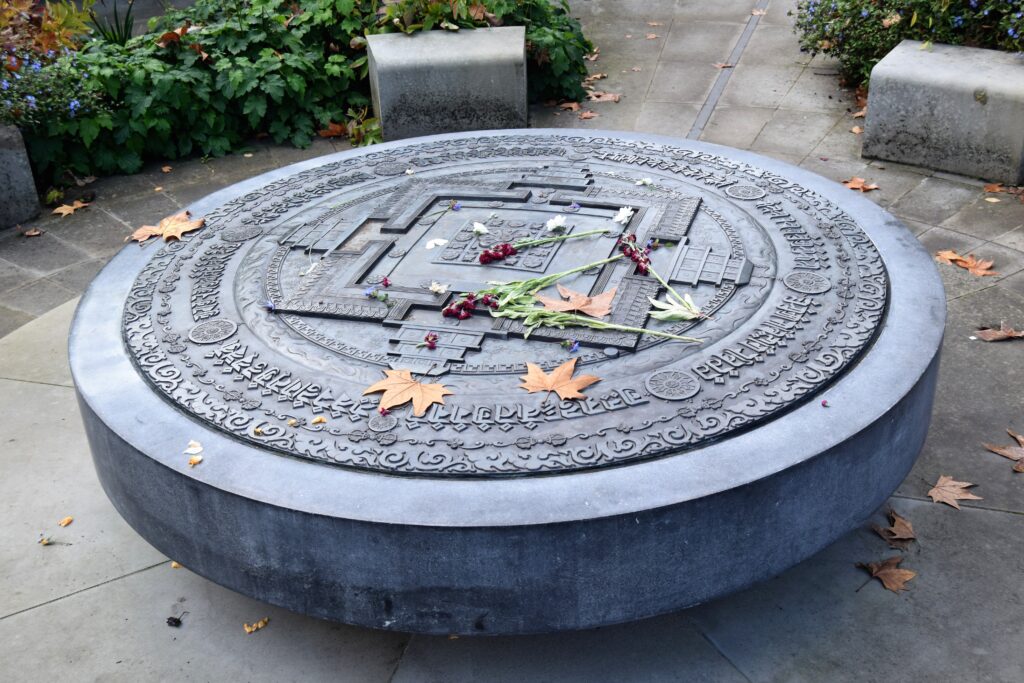
The Meaning of Kalachakra Mandala
Kalachakra is a Sanskrit word that means the wheel of the time or time cycle, where Kala means time and Chakra means wheel. It means Kalachakra is the representation of the time circle. Everything that occurs in our universe will occur in a particular cycle of time.
The world outside, the universe, and its cycles of emergence and disintegration are all included in the outside Kalachakra. Internal fluxes of breath and energy, as well as the cycles of death and rebirth, are all represented in the inner Kalachakra.
A different definition of Kalachakra is the practice of purification carried out by a person to transform ordinary death, birth, and manifestation on both a personal and universal level-each which is typically uncontrollably subject to the passage of time into the fully enlightened state of complete Buddhahood.
The world outside, the universe, and its cycles of emergence and disintegration are all included in the outside Kalachakra. Internal fluxes of breath and energy, as well as the cycles of death and rebirth, are all represented in the inner Kalachakra.
A different definition of Kalachakra is the practice of purification carried out by a person to transform ordinary death, birth, and manifestation on both a personal and universal level-each which is typically uncontrollably subject to the passage of time into the fully enlightened state of complete Buddhahood.
Three Primary Kalachakra
Buddhism views the existence of three distinct Kalachakra, or “bodies,” as being essential to comprehending life and connecting our “being” to the universe. This exact idea, which provides a straightforward yet powerful method to practice dharma and, more significantly, compassion, is what gave rise to the Kalachakra Mandala’s current notoriety.
External Kalachakra: Astrology, astronomy, and mathematics are included here and can be regarded as the fundamental sciences.
Internal Kalachakra: The chakras are the physical structures and energy systems that make up the human body.
Enlightenment Kalchakra: The study and application of the other Kalachakra, which takes us from our ordinary state to the state of Buddha-hood or Enlightenment, is the third Kalachakra.
External Kalachakra: Astrology, astronomy, and mathematics are included here and can be regarded as the fundamental sciences.
Internal Kalachakra: The chakras are the physical structures and energy systems that make up the human body.
Enlightenment Kalchakra: The study and application of the other Kalachakra, which takes us from our ordinary state to the state of Buddha-hood or Enlightenment, is the third Kalachakra.
Mandala and Meditation
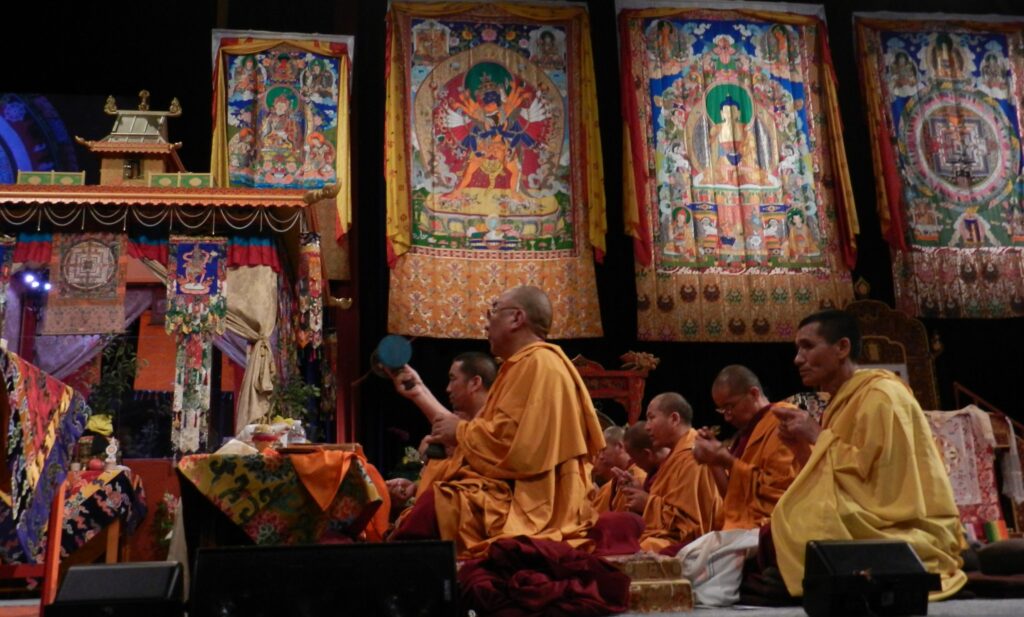
Support for Meditation at 5 Levels
Each of the five stages, or “mandalas,” represents a particular “initiation” or support for meditation. The five “mandala” levels of Tibetan Buddhist art provide support for meditation. Each level is a separate energy system or Kalachakra. The outermost level is the ideal entrance to the Mandala and the beginning of the challenging but steady route to enlightenment.
-Mandala of the Awakened Body
-The Enlightened Speech Mandala
-The Mandala of the Enlightened Mind
-Enlightened wisdom’s mandala
-Great Bliss-Lotus Flower Center Mandala
-The four doors in the four cardinal directions and perfect symmetry across the diagonals are present in every mandala. As seen in every Tibetan Buddhist Mandala Art, the largest to the smallest are listed first.
A Visual Aid for Meditation
These five mandalas are intended to serve as visual aids for meditation, helping the practitioner see their goals and perhaps even the process by which they can accomplish them. The best way to enter the Mandala and start the arduous but steady path to enlightenment may be a question that many people have.
Scholars and monks spend years and decades, being guided by Gurus (teachers) to gain sufficient siddhis (merits), which allow them to pass from one Mandala to the next. This information is extremely complex, no one could allow anyone to teach the practice of Kalachakra. Every step taken in the direction of the center is viewed as a success.
Each of the five stages, or “mandalas,” represents a particular “initiation” or support for meditation. The five “mandala” levels of Tibetan Buddhist art provide support for meditation. Each level is a separate energy system or Kalachakra. The outermost level is the ideal entrance to the Mandala and the beginning of the challenging but steady route to enlightenment.
-Mandala of the Awakened Body
-The Enlightened Speech Mandala
-The Mandala of the Enlightened Mind
-Enlightened wisdom’s mandala
-Great Bliss-Lotus Flower Center Mandala
-The four doors in the four cardinal directions and perfect symmetry across the diagonals are present in every mandala. As seen in every Tibetan Buddhist Mandala Art, the largest to the smallest are listed first.
A Visual Aid for Meditation
These five mandalas are intended to serve as visual aids for meditation, helping the practitioner see their goals and perhaps even the process by which they can accomplish them. The best way to enter the Mandala and start the arduous but steady path to enlightenment may be a question that many people have.
Scholars and monks spend years and decades, being guided by Gurus (teachers) to gain sufficient siddhis (merits), which allow them to pass from one Mandala to the next. This information is extremely complex, no one could allow anyone to teach the practice of Kalachakra. Every step taken in the direction of the center is viewed as a success.
Wrapping It Up
A mandala depicts the dwelling place of a goddess or god. With the right training, mandalas can be entered into and used as a tool for enlightenment. The Sanskrit phrase Kalachakra, where Kala stands for time and Chakra for wheel, refers to the cycle of time.
If you enjoy art and want to add these mandalas to your collection, you can purchase these ancient Thangka paintings of various mandalas online or in a store that sells paintings.
If you enjoy art and want to add these mandalas to your collection, you can purchase these ancient Thangka paintings of various mandalas online or in a store that sells paintings.


